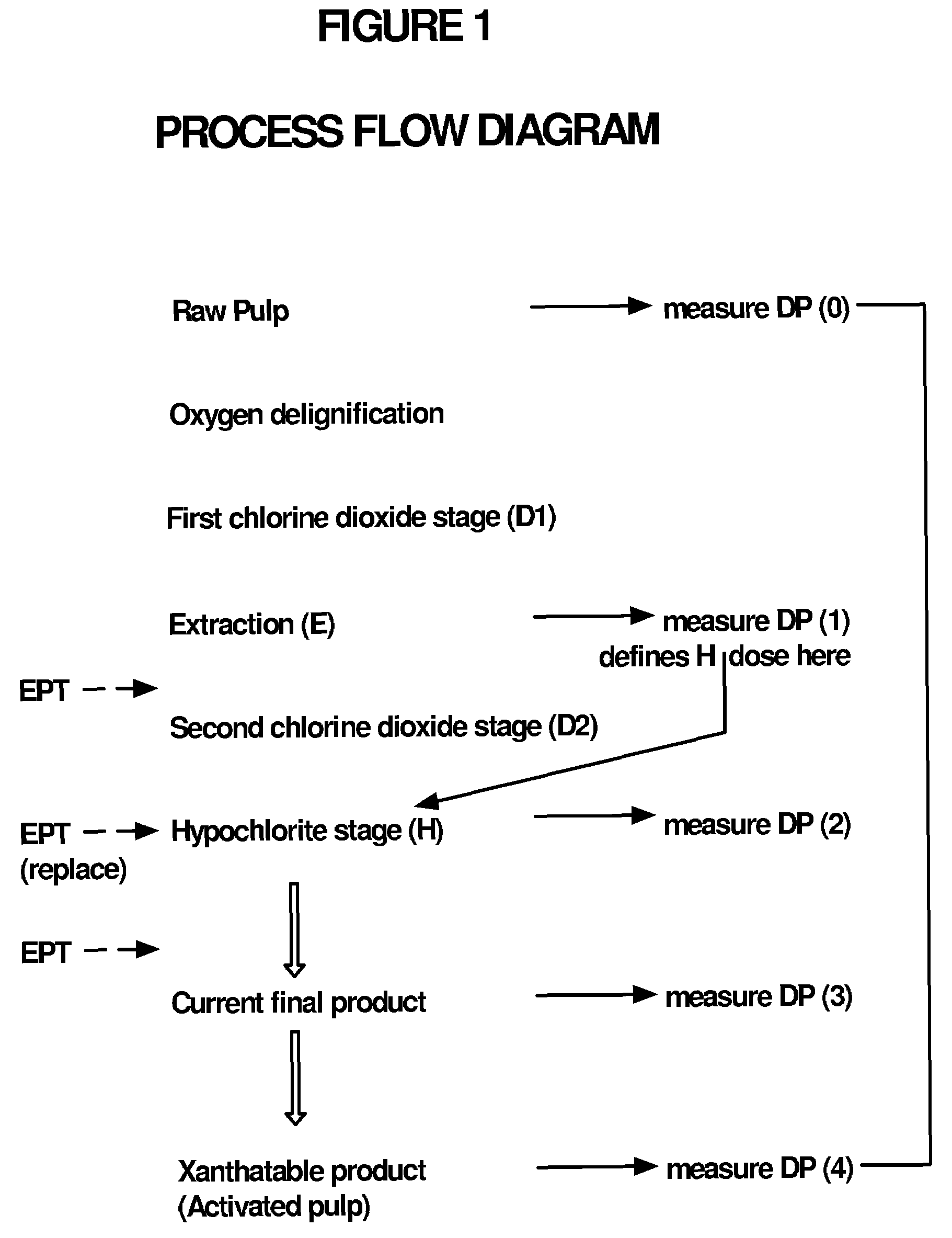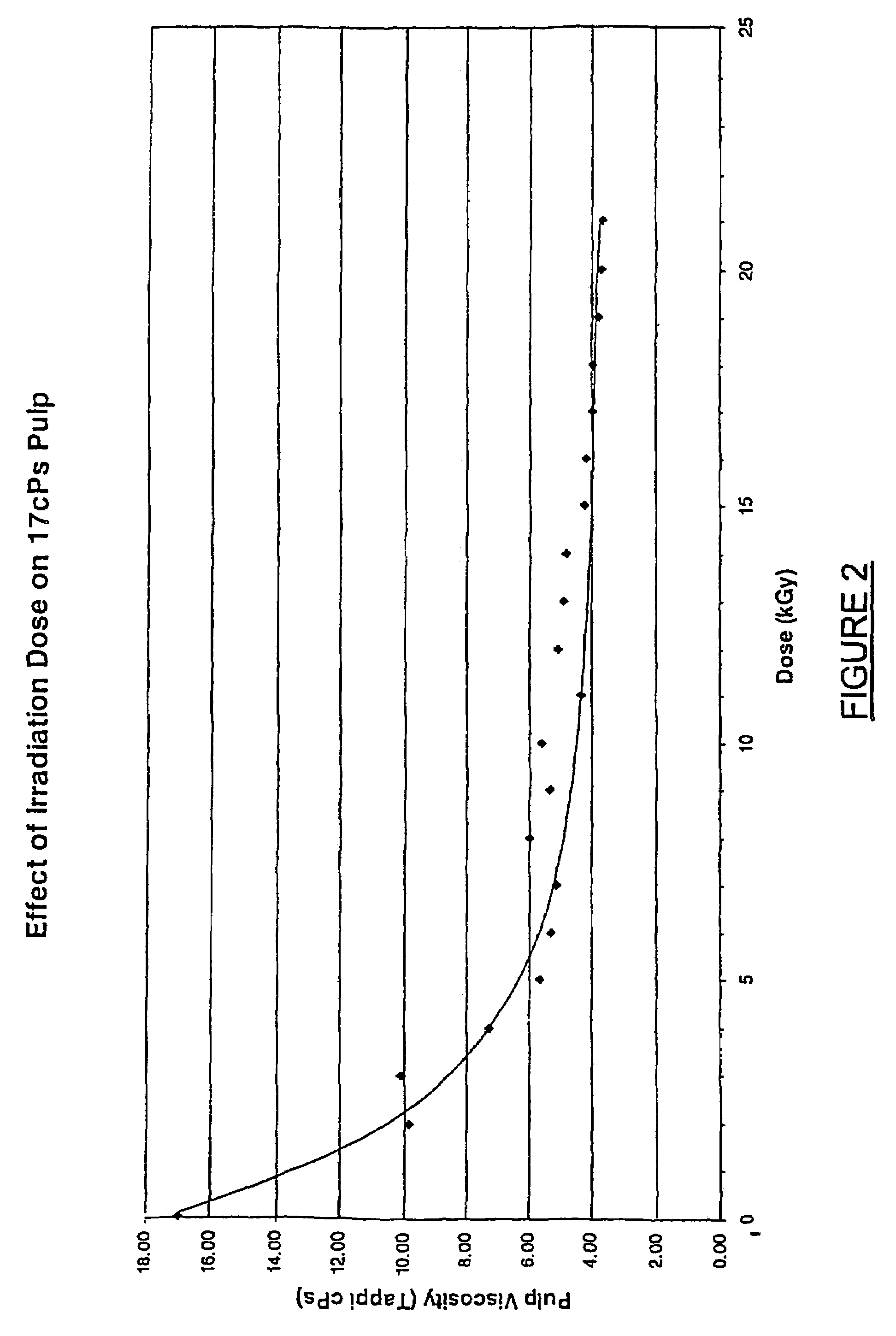Pulp treatment and process
a technology applied in the field of pulp treatment and process, can solve the problems of increasing the processing cost through additional pulp handling, prone to product variability, and thicker shielding that is required, and achieve the effect of reducing environmental problems and reducing the dp rang
- Summary
- Abstract
- Description
- Claims
- Application Information
AI Technical Summary
Benefits of technology
Problems solved by technology
Method used
Image
Examples
example 1
[0082]VSF pulps are produced typically in the range of about 14 to 25 cPs for sulphite pulps. In producing this range of pulp there is typically a percentage of production that falls outside the specified ranges produced for customers of this product, typically about 3 to 5%.
[0083]With particular reference to FIG. 3, using EPT dosing in the range of about 0.1 to 5 kGray, this out-of-specification material was effectively eliminated using FIG. 3 and the values DP(1) or DP(2) to apply a trimming dose of radiation.
example 2
[0084]With particular reference to FIG. 4, post D(2) pulps of different values of DP(1) viscosity were irradiated in the same manner as post DP reduction pulp. This provided final products in either the conventional VSF type product viscosity range, i.e. in the range of about 14 to 25 cPs; or at a higher dose that provided an activated product for use in the VSF process in the range of about 4 to 6 cPs.
example 3
[0085]With particular reference to FIG. 5, when a fixed dose of electron beam irradiation, for example about 15 kGray, was applied to pulp to produce a material for a VSF process, a significant reduction in final product variability was obtained. Taking pulps in the viscosity range from about 14 cPs to about 22 cPs inclusive (—a range of about 9 cPs) at 1 cPs intervals and at a fixed 15 kGray dose, the variability across these products was reduced to only about 0.3 cPs.
[0086]This should be compared to a typical chemical process that gives a viscosity range of about 4 to 5 cPs. An industry best viscosity variation has a range of about 2 cPs.
PUM
| Property | Measurement | Unit |
|---|---|---|
| beam energy | aaaaa | aaaaa |
| energy | aaaaa | aaaaa |
| temperature | aaaaa | aaaaa |
Abstract
Description
Claims
Application Information
 Login to View More
Login to View More - R&D
- Intellectual Property
- Life Sciences
- Materials
- Tech Scout
- Unparalleled Data Quality
- Higher Quality Content
- 60% Fewer Hallucinations
Browse by: Latest US Patents, China's latest patents, Technical Efficacy Thesaurus, Application Domain, Technology Topic, Popular Technical Reports.
© 2025 PatSnap. All rights reserved.Legal|Privacy policy|Modern Slavery Act Transparency Statement|Sitemap|About US| Contact US: help@patsnap.com



